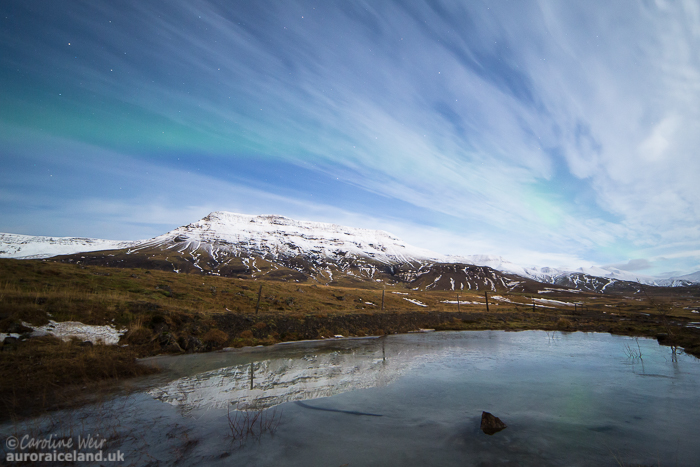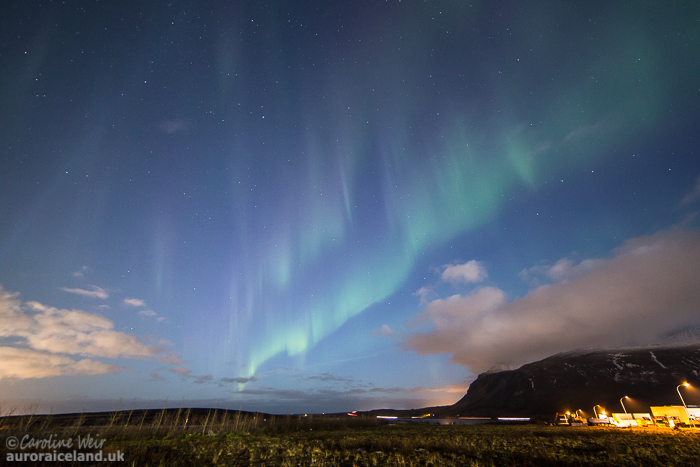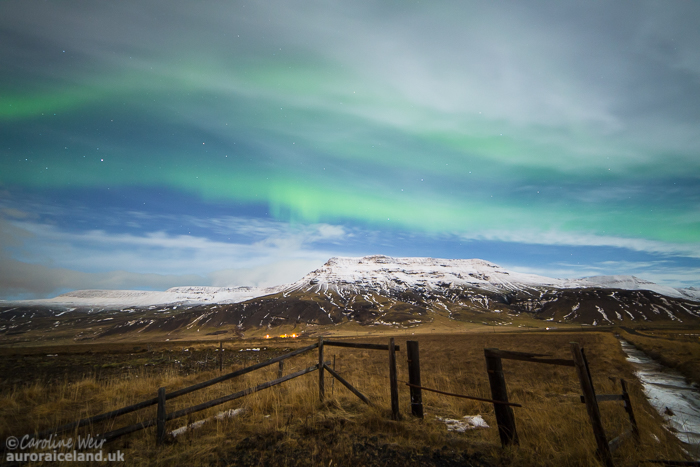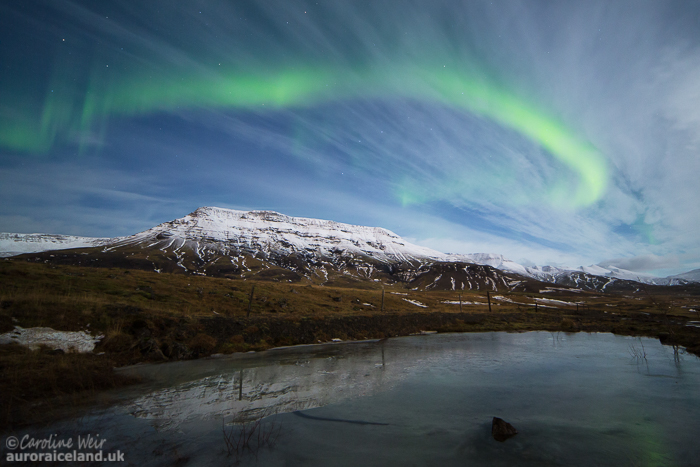This evening saw the return of the solar wind from the earth-facing coronal hole on the sun that produced vivid aurora in Iceland between 7th and 10th November. There was an extremely bright full moon this evening and also the usual persistent cloud layer that limited what I was able to observe, but I was still fortunate to be able to see several nice periods of activity.
Activity started very early, with the appearance of green rays and purple tops to around 30 degrees in the north-west at 17:58 UTC – I could not see the rays well with my eyes as the night was not quite fully dark and I was in an area with a lot of light pollution, but the camera picked them up. A cloud layer quickly ended that sighting, but between 19:20 and 19:30 UTC the cloud cleared sufficiently for me to take a few pictures of some moderate activity to the north-west which comprised some very tall rays and also with several narrow strands of aurora going overhead (Image 1). Some rather thick and extensive cloud moved in shortly after, and obscured my view until 21:57, at which point I looked outside and saw some very strong and bright auroral rayed curtains dancing across the sky overhead and to the north through the clouds, with pink lower fringes readily visible to the eye.
By 22:14 I was on location in an area away from light pollution, but the best of the activity had already finished. Some bright green bands of aurora were still visible overhead and to the north (Image 2), but it was quite difficult to see them against the moonlit bands of cloud that were blanketing much of the sky to the east, south and overhead (Images 3 and 4). From 22:49 the aurora activity seemed to be much weaker and it was very hard to distinguish it from the east-west bands of cloud by eye, although the camera could certainly pick up the green colour (Image 5). There was a brief spell of stronger activity between 22:59 and 23:05 when a nice rayed ribbon of aurora formed in the northern sky and moved around slowly amongst the clouds before fading out again (Images 6 and 7). That was the end of the best activity I saw during the evening and I went home at 23:30. The magnetometer data suggest a stronger peak in activity occurred during the early hours of the 5th December.

Image 3. 22:16 UTC. Taken at: ISO = 1600, f/2.8 @ 14 mm, exposure = 13 sec. Looking north/north-east.

Image 5. 22:52 UTC. Taken at: ISO = 1600, f/2.8 @ 14 mm, exposure = 11 sec. Looking north/north-east.

Image 6. 23:00 UTC. Taken at: ISO = 1600, f/2.8 @ 14 mm, exposure = 6.3 sec. Looking north/north-east.












